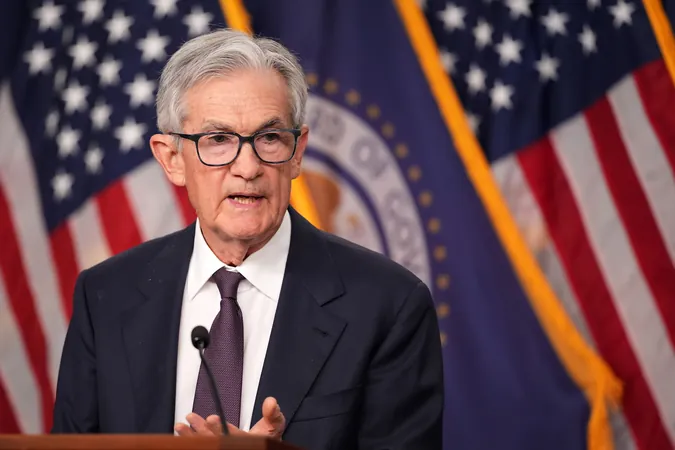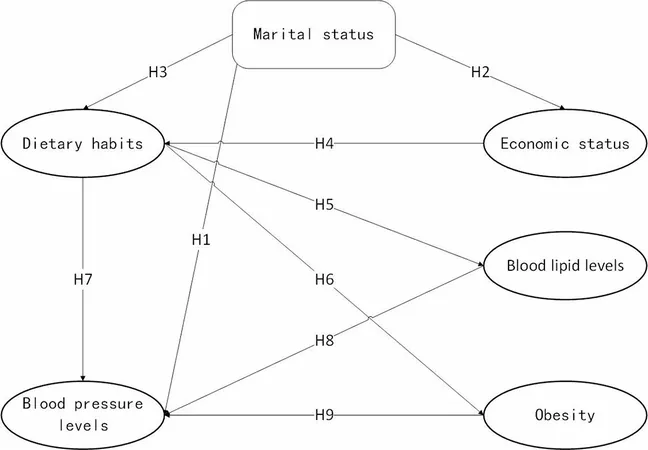
Prepare for Bitcoin's Wild Ride: Volatility Drops as Powell's Speech Approaches!
2025-08-17
Author: Wei
As traders eagerly await Federal Reserve Chairman Jerome Powell's pivotal address at the Jackson Hole Symposium from August 21-23, a surprising calm has blanketed the markets.
Recent data shows Bitcoin's 30-day implied volatility has plunged dramatically, landing at around 36%—the lowest in two years—according to Volmex's BVIV and Deribit's DVOL indices. This trend isn't isolated; the CME Gold Volatility Index (GVZ) has similarly more than halved in the last four months, now sitting at a mere 15.22%, its lowest since January.
Even the MOVE index, which measures Treasury note volatility, has reached a striking low of 76%, while the VIX, often dubbed Wall Street's "fear gauge," compressed down to below 14%—a significant drop from highs of nearly 45% earlier in April.
Why Is This Happening?
The prevailing drop in volatility across these major asset classes is due to shifting central bank policies. Unlike previous easing cycles spurred by crises, the Fed is anticipated to cut rates from still-restrictive levels. This shift signifies that interest rates remain sufficiently high to impact economic growth.
Economic analysts, including the pseudonymous Endgame Macro on X, note a notable change: "Major economies are not easing from emergency lows like during the financial crisis. They’re cutting from restrictive territory, which significantly alters how future cycles will unfold."
Looking ahead, the CME's FedWatch tool suggests a potential rate cut by 25 basis points this September, restoring an easing trajectory after an eight-month pause. Banking powerhouse JPMorgan predicts rates could tumble to between 3.25% and 3.5% by the first quarter of 2026.
The Calm Before the Storm?
Despite optimistic expectations, some market observers warn that this tranquility may indicate an overconfidence in the markets. As trade tariffs cast shadows over economic growth and inflation data remains sticky, experts like Scott Bauer from Prosper Trading Academy argue that the prevailing low volatility isn't sustainable.
Goldman Sachs analysts have also sounded alarms, cautioning clients against complacency. They highlight that current bond spreads are at their lowest since 2007, and they recommend maintaining hedges against potential downturns. "Growth could surprise on the downside, dis-inflationary trends may fade, and renewed concerns about Fed independence could spark sharp sell-offs in long-dated yields," they cautioned.
Buckle Up!
In essence, while the current decline in volatility across assets may reflect expectations for easier monetary policy and a stable economy, it’s crucial to remain vigilant. History suggests that periods of low volatility often precede a storm—so hold on tight as we approach Powell's highly anticipated speech!



 Brasil (PT)
Brasil (PT)
 Canada (EN)
Canada (EN)
 Chile (ES)
Chile (ES)
 Česko (CS)
Česko (CS)
 대한민국 (KO)
대한민국 (KO)
 España (ES)
España (ES)
 France (FR)
France (FR)
 Hong Kong (EN)
Hong Kong (EN)
 Italia (IT)
Italia (IT)
 日本 (JA)
日本 (JA)
 Magyarország (HU)
Magyarország (HU)
 Norge (NO)
Norge (NO)
 Polska (PL)
Polska (PL)
 Schweiz (DE)
Schweiz (DE)
 Singapore (EN)
Singapore (EN)
 Sverige (SV)
Sverige (SV)
 Suomi (FI)
Suomi (FI)
 Türkiye (TR)
Türkiye (TR)
 الإمارات العربية المتحدة (AR)
الإمارات العربية المتحدة (AR)